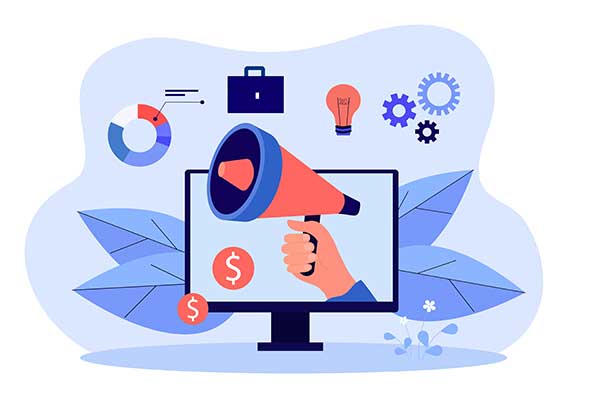About the author
Cris Sanders is a technology and marketing strategist with expertise in helping Managed Service Providers (MSPs) grow through targeted lead generation. With a deep understanding of digital marketing, IT services, and industry trends, he provides actionable insights to enhance MSP success.

Managed Service Providers (MSPs) play a vital role in helping businesses manage their IT needs. However, finding the right clients can often feel like searching for a needle in a haystack. Without a steady stream of qualified leads, even the most skilled MSPs can struggle to grow. This is where targeted lead generation comes in. By focusing on attracting the right clients—those who truly need your services and are likely to stay long-term—you can build a stronger, more sustainable business.
Let’s break down how to make this strategy work effectively.
Why Targeted Lead Generation Matters
Not all leads are created equal. Some businesses might show interest but aren’t the right fit for your services. Others could be perfect for what you offer but don’t know you exist. Targeted lead generation helps bridge this gap. It’s about identifying and reaching out to businesses that align with your strengths and can benefit most from your expertise.
For example, if your MSP specializes in cybersecurity for small businesses, targeting large enterprises might not yield the best results. Instead, focusing on small to medium-sized businesses in industries like healthcare or finance—where data security is critical—can lead to more meaningful connections. This comprehensive approach not only saves time and resources but also increases your chances of converting valuable leads into loyal clients.
If you need expert assistance in MSP lead generation, visiting Jumpfactor’s website or similar platforms can provide valuable insights and effective strategies to refine your approach. Their expertise in digital marketing tactics and lead generation for MSPs can help ensure that your efforts reach your target audience effectively.
Implementing an Effective MSP Lead Generation Strategy
To generate high-quality leads, MSPs need a structured approach that aligns with their business goals. The following key strategies can help attract and convert the right clients.
Understanding Your Ideal Client
Before diving into lead generation, it’s essential to have a clear picture of your ideal client. What industries do they operate in? How big is their business? What challenges do they face? Answering these questions helps you create a detailed profile of the type of clients you want to attract.
One effective way to do this is by creating a client persona. For instance, if your MSP excels in cloud solutions or managed security services, your ideal client might be a mid-sized company looking to migrate from on-premise servers. Knowing this allows you to tailor your messaging and services to meet their specific needs, making your outreach more relevant and impactful.
Building a Strong Online Presence
In today’s world, most businesses start their search for services online. If your MSP doesn’t have a strong online presence, you could be missing out on potential leads. A professional website, active social media profiles, and positive reviews are key components of solid online visibility.
Your website should clearly explain what you offer and how it benefits your prospective clients. Including case studies, client testimonials, and blog posts about common IT challenges can also help establish your expertise. Platforms like LinkedIn are particularly useful for connecting with decision-makers in your target industries, allowing you to build relationships and showcase your value.
Leveraging Content Marketing
Content marketing is a powerful tool for attracting inbound leads. By creating valuable content, you can position your MSP as an authority in the field. This could include blog posts, whitepapers, webinars, or even video tutorials.
For example, a blog post titled “5 Common Cybersecurity Mistakes Small Businesses Make” can attract business owners looking for solutions to those exact problems. Offering a free downloadable guide or checklist can further engage potential clients and encourage them to reach out. The key is to provide relevant content that addresses their pain points and demonstrates how your services can help.
Networking and Building Partnerships
Sometimes, the best leads come from personal connections. Attending industry events, joining professional organizations, and building relationships with other businesses can open doors to new opportunities.
Partnerships with complementary service providers can also be incredibly beneficial. For instance, partnering with a software vendor or a telecom company can lead to referrals. These collaborations can expand your reach and bring in leads that might not have found you otherwise. Networking and partnerships not only help you generate leads but also strengthen your reputation in the industry.
Using Data to Refine Your Strategy
Targeted lead generation isn’t a one-and-done effort. It requires ongoing analysis and adjustment. Tracking key metrics like website traffic, conversion rates, and lead sources can provide valuable insights into what’s working and what’s not.

For example, if you notice that most of your leads come from LinkedIn, you might want to invest more time and resources into that platform. On the other hand, if a particular type of content isn’t generating interest, it might be time to try something new. Regularly reviewing your data ensures that your strategy stays effective and aligned with your actionable goals.
The Importance of Follow-Up
Generating leads is only half the battle. Following up promptly and effectively is crucial for turning those leads into clients. A quick response to an inquiry can make a lasting impression and set you apart from competitors.
Automation tools like CRM systems can help manage follow-ups efficiently. However, personalization is key. A generic email might not have the same impact as a message that addresses the client’s specific needs or concerns. Taking the time to understand their challenges and offering tailored solutions can make all the difference.
Conclusion
Targeted lead generation is more than just a buzzword—it’s a vital strategy for MSPs looking to grow sustainably. By understanding your ideal client, building a strong online presence, leveraging content marketing, and using data to refine your approach, you can attract the right clients and build lasting relationships. Success doesn’t happen overnight, but with consistent effort and the right strategies, your MSP can achieve long-term growth and stability.


Leave a Reply